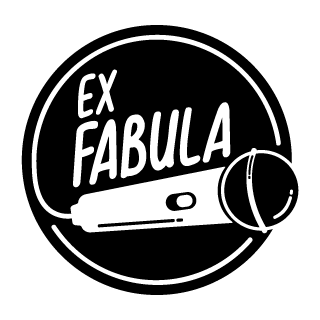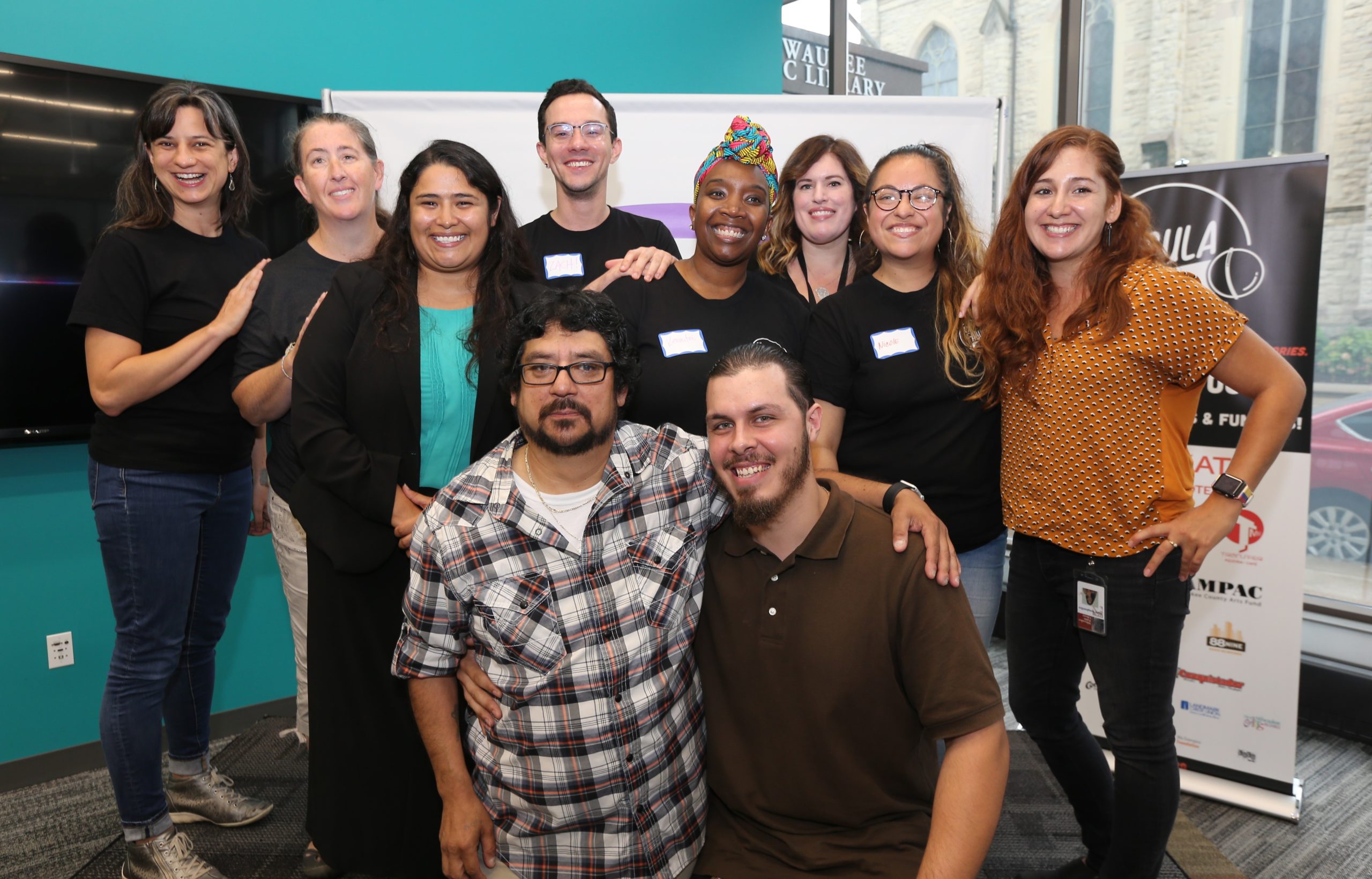One of Ex Fabula’s biggest accomplishments in 2019 was presenting the first Deaf StorySlam in the state of Wisconsin. This effort was part of Milwaukee Public Library’s GASP project which was funded by an Our Town grant from the National Endowment for the Arts. Key partners included UW-Milwaukee’s Deaf Awareness Week and ASL Studies Program Coordinator Erin Wiggins, and the two Deaf community members that were trained to serve as storytelling coaches, Mayra Castrejón Hernandez and Jose Barraza.
This project helped me to notice my privilege as a hearing person in a world designed for hearing people. It also revealed the ways that I and other hearing folks are missing out on the talents of the Deaf community – especially in the workplace. Fortunately, I also learned strategies to create more inclusive spaces; I hope these inspire others to create “aggressively inclusive” spaces and to share their learning with me as well.
Top learning
- Deaf vs deaf
Deaf (with a capital D) refers to a community with a shared language and culture. Although some funding for accommodations for Deaf people is linked to the Americans with Disabilities Act, but not all Deaf individuals self-identify as having a disability. Lower case “deaf” generally refers to the medical condition itself, and some people may refer to themselves that way, especially if they don’t use ASL or actively participate in Deaf culture.
- ASL or American Sign Language is a unique, visual language with its own grammar and word order. In fact, English is technically a 2nd or even 3rd language for some Deaf folks. So, although texting and emailing are useful, they can’t fully replace meeting in person with a professional interpreter.
- ASL has accents just like spoken languages do! Each person has their own flair, and there are differences between generations as well. As an example, one interpreter told me he could tell Jonathan Petermon is originally from Chicago because of his accent!
- Although sign language interpreters do their best, some nuances like facial expressions and body language just don’t translate into spoken English. Plus interpretation has a time delay, because the interpreter’s spoken English happens after all the visual expression. But, like I told the audience at the StorySlam, “If you’re confused and feel like you’re missing something – you probably are. And that’s okay. It’s just something that happens with cross cultural communication. Maybe, for a minute, you can imagine what it’s like to live in a community where they speak another language.”
- As Mayra and Jose explained in this Shepherd Express interview, in some communities, stigma and fear of deafness is so strong that some parents aren’t sending their deaf children to learn ASL – and that’s a huge tragedy.
- Deaf presenters need a podium for their notes, since they communicate with their hands! Luckily Kennita realized this on the day of the Slam so we were able to grab some music stands.
- Deaf people have their own name signs that they use as shortcuts for finger spelling their names. They’re very unique and creative – and hearing people cannot just make one up; you have to be gifted a sign.
Advice:
- Say Deaf or hard of hearing. Terms to stop using: Hearing impaired.
- Provide professional interpretation. Budget for it, or leverage resources like the ODHH State Service Fund.
- When speaking with a Deaf person, look at and speak directly to them (vs speaking to the interpreter).
- At events, ensure you have a raised stage with good lighting so that it’s easy to see the interpreters.
- Don’t expect Deaf people to both read and listen at the same time. At our first meeting, I suddenly realized that we needed time for people to review the documents before discussing – which honestly leads to better discussion anyway.
- Don’t think you can quickly learn ASL – but do make an effort. “Thank you” is super useful sign!
- Don’t lump all d/Deaf people together. Each person has a unique story.
These lists aren’t complete, of course, and neither is my learning. Thank you to Erin, Jose and Mayra, and all the Deaf community members who shared their stories during this project. I look forward to hearing more of your stories.






Leave A Comment